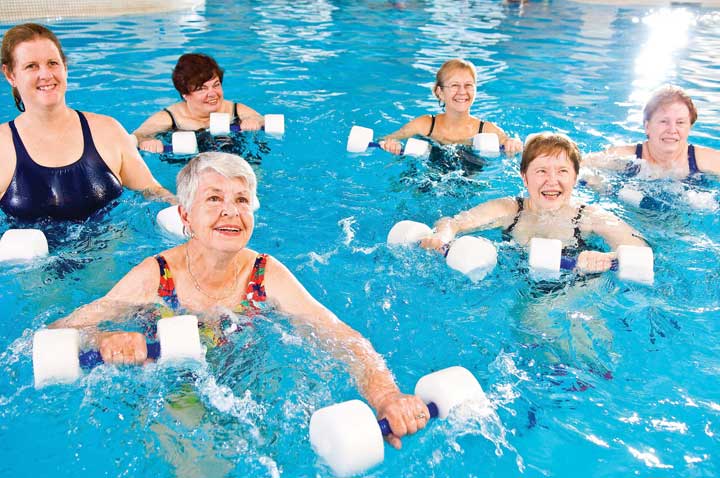This is “Personal Factors That Affect People’s Buying Behavior”, section 3.3 from the book Marketing Principles (v. 1.0). For details on it (including licensing), click here.
For more information on the source of this book, or why it is available for free, please see the project's home page. You can browse or download additional books there. To download a .zip file containing this book to use offline, simply click here.
3.3 Personal Factors That Affect People’s Buying Behavior
Learning Objectives
- Explain how a person’s self-concept and ideal self affects what he or she buys.
- Describe how companies market products to people based on their genders, life stages, and ages.
- Explain how looking at the lifestyles of consumers helps firms understand what they want to purchase.
The Consumer’s Personality
PersonalityAn individual’s disposition as other people see it. describes a person’s disposition as other people see it. The following are the “Big Five” personality traits that psychologists discuss frequently:
- Openness. How open you are to new experiences.
- Conscientiousness. How diligent you are.
- Extraversion. How outgoing or shy you are.
- Agreeableness. How easy you are to get along with.
- Neuroticism. How prone you are to negative mental states.
The question marketing professionals want answered is do the traits predict people’s purchasing behavior? Can companies successfully target certain products at people based on their personalities? And how do you find out what personalities they have? Are the extraverts you know wild spenders and the introverts you know penny pinchers? Maybe not.
The link between people’s personalities and their buying behavior is somewhat unclear, but market researchers continue to study it. For example, some studies have shown that “sensation seekers,” or people who exhibit extremely high levels of openness, are more likely to respond well to advertising that’s violent and graphic. The practical problem for firms is figuring out “who’s who” in terms of their personalities.
The Consumer’s Self-Concept
Marketers have had better luck linking people’s self-concept to their buying behavior. Your self-conceptHow a person sees himself or herself. is how you see yourself—be it positive or negative. Your ideal selfHow a person would like to view himself or herself. is how you would like to see yourself—whether it’s prettier, more popular, more eco-conscious, or more “goth.”
Marketing researchers believe people buy products to enhance how they feel about themselves—to get themselves closer to their ideal selves, in other words. The slogan “Be All That You Can Be,” which for years was used by the U.S. Army to recruit soldiers, is an attempt to appeal to the self-concept. Presumably, by joining the U.S. Army, you will become a better version of yourself, which will, in turn, improve your life. Many beauty products and cosmetic procedures are advertised in a way that’s supposed to appeal to the ideal selves people are searching for. All of us want products that improve our lives.
The Consumer’s Gender
Everyone knows that men and women buy different products. Physiologically speaking, they simply need different product—different underwear, shoes, toiletries, and a host of other products.Cheryl B. Ward and Tran Thuhang, “Consumer Gifting Behaviors: One for You, One for Me?” Services Marketing Quarterly 29, no. 2 (2007): 1–17. Men and women also shop differently. One study by Resource Interactive, a technology research firm, found that when shopping online, men prefer sites with lots of pictures of products; women prefer to see products online in lifestyle context—say, a lamp in a living room. Women are also twice as likely as men to use viewing tools such as the zoom and rotate buttons and links that allow them to change the color of products.
In general, men have a different attitude about shopping than women do. You know the old stereotypes: Men see what they a want and buy it, but women “shop ‘til they drop.” There’s some truth to the stereotypes. Otherwise, you wouldn’t see so many advertisements directed at one sex or the other—beer commercials that air on ESPN and commercials for household products that air on Lifetime. In fact, women influence fully two-thirds of all household product purchases, whereas men buy about three-quarters of all alcoholic beverages.Genevieve Schmitt, “Hunters and Gatherers,” Dealernews 44, no. 8 (2008): 72. The article references the 2006 Behavioral Tracking Study by Miller Brewing Company.
Video Clip
What Women Want versus What Men Want
(click to see video)Check out this Heineken commercial which highlights the differences between “what women want” and “what men want” when it comes to products.
The shopping differences between men and women seem to be changing, though. For example, younger, well-educated men are less likely to believe grocery shopping is a woman’s job. They would also be more inclined to bargain shop and use coupons if the coupons were properly targeted at them.Jeanne Hill and Susan K. Harmon, “Male Gender Role Beliefs, Coupon Use and Bargain Hunting,” Academy of Marketing Studies Journal 11, no. 2 (2007): 107–21. One survey found that approximately 45 percent of married men actually like shopping and consider it relaxing.
Figure 3.6

Marketing to men is big business. Some advertising agencies specialize in advertisements designed specifically to appeal to male consumers.
© 2010 Jupiterimages Corporation
Many businesses today are taking greater pains to figure out “what men want.” Products such as face toners and body washes for men, such as the Axe brand, are a relatively new phenomenon. So are hair salons such as the Men’s Zone and Weldon Barber. Some advertising agencies specialize in advertising directed at men. Keep in mind that there are also many items targeted toward women that weren’t in the past, including products such as kayaks and mountain bikes.
The Consumer’s Age and Stage of Life
You have probably noticed that the things you buy have changed as you age. When you were a child, the last thing you probably wanted as a gift was clothing. As you became a teen, however, cool clothes probably became a bigger priority. Don’t look now, but depending on the stage of life you’re currently in, diapers and wrinkle cream might be just around the corner.
Companies understand that people buy different things based on their ages and life stages. Aging baby boomers are a huge market that companies are trying to tap. Ford and other car companies have created “aging suits” for young employees to wear when they’re designing automobiles.“Designing Cars for the Elderly: A Design Story,” http://www.businessweek.com/globalbiz/content/may2008/gb2008056_154197.htm (accessed April 13, 2012). The suit simulates the restricted mobility and vision people experience as they get older. Car designers can then figure out how to configure the automobiles to better meet the needs of these consumers.
Lisa Rudes Sandel, the founder of Not Your Daughter’s Jeans (NYDJ), created a multimillion-dollar business by designing jeans for baby boomers with womanly bodies. Since its launch seven years ago, NYDJ has become the largest domestic manufacturer of women’s jeans under $100. “The truth is,” Rudes Sandel says, “I’ve never forgotten that woman I’ve been aiming for since day one.” Sandel “speaks to” every one of her customers via a note tucked into each pair of jean that reads, “NYDJ (Not Your Daughter’s Jeans) cannot be held responsible for any positive consequence that may arise due to your fabulous appearance when wearing the Tummy Tuck jeans. You can thank me later.”Sarah Saffian, “Dreamers: The Making of Not Your Daughter’s Jeans,” Reader’s Digest, March 2009, 53–55.
Figure 3.7

You’re only as old as you feel—and the things you buy.
© 2010 Jupiterimages Corporation
Your chronological ageA person’s age in years., or actual age in years, is one thing. Your cognitive ageThe age a buyer perceives himself or herself to be., or how old you perceive yourself to be, is another. In other words, how old do you really feel? A person’s cognitive age affects the activities one engages in and sparks interests consistent with the person’s perceived age.Benny Barak and Steven Gould, “Alternative Age Measures: A Research Agenda,” in Advances in Consumer Research, vol. 12, ed. Elizabeth C. Hirschman and Morris B. Holbrook (Provo, UT: Association for Consumer Research, 1985), 53–58. Cognitive age is a significant predictor of consumer behaviors, including people’s dining out, watching television, going to bars and dance clubs, playing computer games, and shopping.Benny Barak and Steven Gould, “Alternative Age Measures: A Research Agenda,” in Advances in Consumer Research, vol. 12, ed. Elizabeth C. Hirschman and Morris B. Holbrook (Provo, UT: Association for Consumer Research, 1985), 53–58. How old people “feel” they are has important implications for marketing professionals. For example, companies have found that many “aged” consumers don’t take kindly to products that feature “old folks.” The consumers can’t identify with them because they see themselves as being younger. We will discuss more about the various age groups and how marketing professionals try to target them in Chapter 5 "Market Segmenting, Targeting, and Positioning".
The Consumer’s Lifestyle
At the beginning of the chapter, we explained that two consumers (say, you and your best friend) can be similar in age, personality, gender, and so on but still purchase very different products. If you have ever watched the television show Wife Swap, you can see that despite people’s similarities (e.g., being middle-class Americans who are married with children), their lifestyles can differ radically.
To better understand consumers and connect with them, companies have begun looking more closely at consumers’ lifestyles. This often includes asking consumers to fill out extensive questionnaires or conducting in-depth interviews with them. The questionnaires go beyond asking people about the products they like, where they live, and what sex they are. Instead, researchers ask people what they do—that is, how they spend their time and what their priorities, values, and general outlooks on the world are. Where do they go other than work? Who do they like to talk to? What do they talk about? Researchers hired by Procter & Gamble have gone so far as to follow women around for weeks as they shop, run errands, and socialize with one another.Robert Berner, “Detergent Can Be So Much More,” BusinessWeek, May 1, 2006, 66–68. Other companies have paid people to keep a daily journal of their activities and routines.
Audio Clip
Interview with Joy Mead
http://app.wistia.com/embed/medias/45f9c7fa67Joy Mead is an associate director of marketing for Procter & Gamble. Listen to this audio clip to learn about the approach Procter & Gamble takes to understand customers.
A number of research organizations examine lifestyle and psychographic characteristics of consumers. PsychographicsMeasuring the attitudes, values, lifestyles, and opinions of consumers using demographics. combines the lifestyle traits of consumers (for example, whether they are single or married, wealthy or poor, well-educated or high school dropouts) and their personality styles with an analysis of their attitudes, activities, and values to determine groups of consumers with similar characteristics. We will talk more about psychographics and what companies do to develop further insight into what consumers want in Chapter 5 "Market Segmenting, Targeting, and Positioning".
Key Takeaway
Your personality describes your disposition as other people see it. Market researchers believe people buy products to enhance how they feel about themselves. Your gender also affects what you buy and how you shop. Women shop differently than men. However, there’s some evidence that this is changing. Younger men and women are beginning to shop more alike. People buy different things based on their ages and life stages. A person’s cognitive age is how old he “feels” himself to be. To further understand consumers and connect with them, companies have begun looking more closely at their lifestyles (what they do, how they spend their time, what their priorities and values are, and how they see the world).
Review Questions
- Explain how someone’s personality differs from his or her self-concept. How does the person’s ideal self come into play in a consumer-behavior context?
- Describe the buying patterns women exhibit versus men.
- Why are companies interested in consumers’ cognitive ages?
- What are some of the consumer lifestyle factors firms examine?




